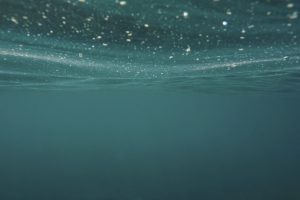
Original public domain image
U.S. Navy Provides WPI Researchers with Funding for Underwater Drone Tech
by DRONELIFE Staff Writer Ian M Crosby
The U.S. Navy has awarded Worcester Polytechnic Institute (WPI) researchers Nikolaos Gatsonis and Michael Demetriou with $347,843 for the development of a computational model utilizing data from a system of autonomous underwater vehicles (AUVs) or underwater drones to provide real-time evaluations of the concentration and source of a contaminant liquid or gas plume as it circulates throughout the ocean. Upon being deployed on an AUV network, the estimator could assist in determining responses to chemical or biological threats, accidents, and environmental disasters.
“Locating the plume source and estimating in real-time the concentration of a liquid or gas plume in ocean waters is complex but critical,” explained Gatsonis, head of WPI’s Department of Aerospace Engineering. “With better, faster detection and estimation of underwater plumes, the Navy and other agencies could respond to intrusions, submerged airplanes or vehicles, people who are trapped, and contaminants that should be contained or remediated.”
As co-principal investigators on the three-year project, Professors Gatsonis and Demetriou will develop algorithms capable of being carried out quickly on the underrwater drone hardware. This will enable groups of at least three AUVs to patrol an area until detecting a plume, upon which they will gather sensor data and initiate evaluations of the plume’s physical qualities. This model will also allow multiple AUVs to work together, travel to new locations for more information about the plume, and continue to operate should one or more AUVs fail.
The project expands upon Gatsonis and Demetriou’s interdisciplinary research bringing together advanced computational methods for real-time estimation with vehicle guidance and control. Gatsonis is an expert on the development of computational methods and their application to the simulation of complex physical and aerospace systems, and Demetriou on control of systems and optimal ways of moving or scheduling sensors distributed in space. The project will also see participation from WPI students.
The two developed a similar model in the past to allow unmanned aerial vehicles to collect data and estimate the concentration of gas plumes in the atmosphere, with the project receiving support from the Air Force Office of Scientific Research and DARPA.
Read more about DARPA and Navy research:
Ian attended Dominican University of California, where he received a BA in English in 2019. With a lifelong passion for writing and storytelling and a keen interest in technology, he is now contributing to DroneLife as a staff writer.
Miriam McNabb is the Editor-in-Chief of DRONELIFE and CEO of JobForDrones, a professional drone services marketplace, and a fascinated observer of the emerging drone industry and the regulatory environment for drones. Miriam has penned over 3,000 articles focused on the commercial drone space and is an international speaker and recognized figure in the industry. Miriam has a degree from the University of Chicago and over 20 years of experience in high tech sales and marketing for new technologies.
For drone industry consulting or writing, Email Miriam.
TWITTER:@spaldingbarker
Subscribe to DroneLife here.
https://dronelife.com/2022/08/22/researchers-help-underwater-drones-detect-ocean-contaminants-like-oil-spills-or-gas-leaks/
 Unmanned Aerial Vehicle The latest drone news
Unmanned Aerial Vehicle The latest drone news




